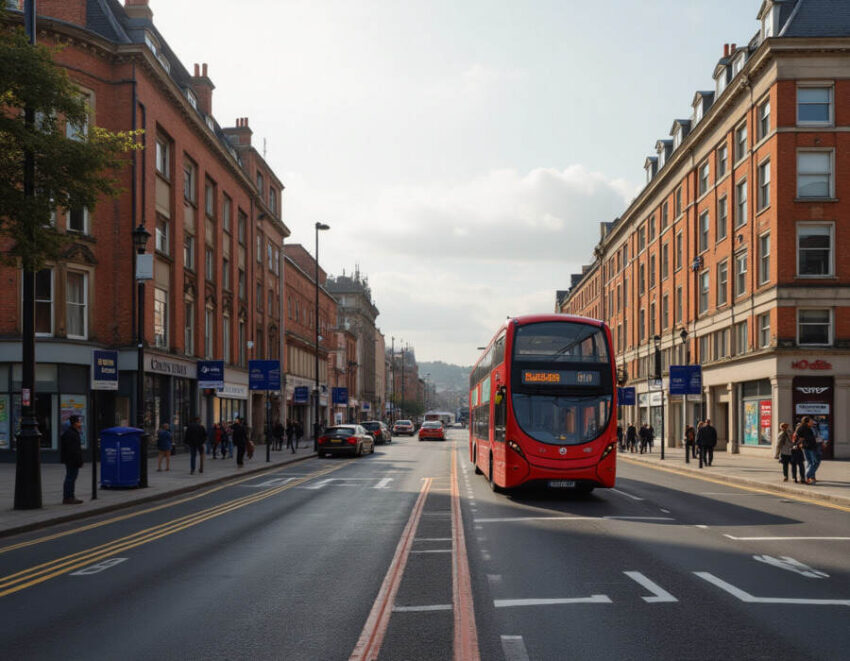Thursday, June 5, 2025

Bristol is embarking on an ambitious transformation of its urban mobility, as the city introduces a visionary new red route and a comprehensive suite of public transport upgrades. The initiative aims to ease congestion, improve air quality, and offer more sustainable travel options for residents and visitors. With major infrastructure improvements set to take place over the next few years, this project promises to not only enhance current Metrobus services but also lay the foundation for a future tram or bus rapid transit system that will reshape how people move around the city.
Bristol Advances Ambitious Public Transit Plan with Dedicated Red Route and Citywide Upgrades
Bristol is taking significant steps toward reshaping its urban transport network with a bold new plan to introduce a dedicated mass transit corridor stretching from the southwest to the northeast of the city. The proposed route will begin at Long Ashton park and ride, pass through the bustling city center, and follow the M32 towards the northeast, remaining mostly separate from regular traffic. The initiative signals a major shift in how the city aims to address congestion, climate targets, and long-term connectivity.
Citywide Roadworks Pave the Way for Transformation
As part of this multi-phased initiative, Bristol is preparing for two years of major roadworks at several key junctions and corridors in the city. Works are expected to occur at high-traffic areas such as Bedminster Bridges roundabout, Redcliffe roundabout, Union Street, the Haymarket, and Bond Street. These areas are crucial to the smooth operation of the current Metrobus M2 service and are also central to the future expansion of high-capacity public transport in Bristol.
The current works are designed not just for short-term traffic improvements, but also to lay the groundwork for a much larger vision: the possibility of implementing either a tram system or a bus rapid transit network.
A Long-Standing Debate on Transit Modes
Bristol’s ambition to build a mass transit network is not new. For decades, local authorities, residents, and transport experts have debated the most suitable model to meet the city’s growing needs. The two leading contenders remain a light rail tram system and a bus rapid transit (BRT) network. Each offers specific advantages, but consensus remains elusive.
The West of England Combined Authority (WECA) has continued to explore both options, yet no formal commitment has been made. The newly elected metro mayor, Labour’s Helen Godwin, has so far remained non-committal, choosing to continue evaluations rather than endorse a definitive solution.
City Council Moves Ahead with Red Route Implementation
Despite the lack of a final decision on transport mode, Bristol City Council is actively pressing forward with critical infrastructure improvements. At the center of this effort is the red route, a partially bus-only corridor that will serve as a prototype or foundation for the city’s future transit ambitions.
This route starts at the Long Ashton park and ride, moves along a dedicated busway to Cumberland Road, and proceeds through the Bedminster Bridges junction. Redcliffe Street is set to become bus-only, reinforcing the city’s push to reduce car traffic in central areas. Further along the route, a bus gate at Bristol Bridge will restrict general vehicle access, continuing the path through Union Street and past the Haymarket, a busy retail and commuter zone.
Plans also include additional dedicated bus lanes along the M32, alongside the construction of a new park and ride facility, though the precise location is still under consideration. In the longer term, city planners are even exploring the idea of downgrading sections of the M32 from a motorway to an A-road to accommodate tram or BRT stops more effectively.
Potential for Orbital Bus Loop and Policy Challenges
The redesign of Redcliffe roundabout has created opportunities for launching an orbital bus loop around the city center. Initially planned to operate in an anti-clockwise direction, this loop could significantly improve inner-city mobility. Left turns dominate the layout due to their easier implementation, but successful deployment depends on adequate funding.
Franchising may be necessary if commercial bus companies are unwilling to operate the new routes independently. The full rollout hinges on support from both public funds and private operators.
Bristol is set to transform its urban mobility with a bold red route and significant public transport upgrades, aiming to reduce congestion and improve sustainability. This initiative will enhance current services while laying the foundation for future transit solutions like trams or bus rapid transit.
A Vision for the 2030s
While enthusiasm for the project is growing, actual construction for the full mass transit system—whether tram or BRT—is not expected to begin until the 2030s. WECA is currently developing an outline business case to evaluate feasibility, funding options, and preferred modes of operation.
Despite lingering uncertainties, one goal is clear: Bristol aims to reduce car dependence, cut emissions, and enhance public mobility. The red route is only the first step in what could become one of the most transformative infrastructure efforts in the city’s modern history.




















